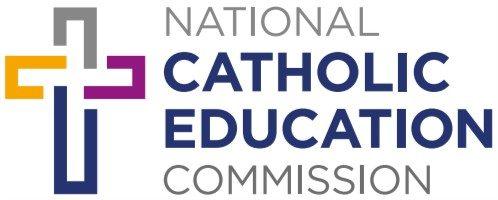Mark 13:32-37
The Necessity for Watchfulness
32 “But about that day or hour no one knows, neither the angels in heaven, nor the Son, but only the Father. 33 Beware, keep alert; for you do not know when the time will come. 34 It is like a man going on a journey, when he leaves home and puts his slaves in charge, each with his work, and commands the doorkeeper to be on the watch. 35 Therefore, keep awake—for you do not know when the master of the house will come, in the evening, or at midnight, or at cockcrow, or at dawn, 36 or else he may find you asleep when he comes suddenly. 37 And what I say to you I say to all: Keep awake.”
New Revised Standard Version Bible: Catholic Edition, copyright © 1989, 1993 the Division of Christian Education of the National Council of the Churches of Christ in the United States of America. Used by permission. All rights reserved.
What to do with this educator’s commentary
This commentary invites you as a teacher to engage with and interpret the passage. Allow the text to speak first. The commentary suggests that you ask yourself various questions that will aid your interpretation. They will help you answer for yourself the question in the last words of the text: ‘what does this mean?’
This educator’s commentary is not a ‘finished package’. It is for your engagement with the text. You then go on to plan how you enable your students to work with the text.
Both you and your students are the agents of interpretation. The ‘Worlds of the Text’ offer a structure, a conversation between the worlds of the author and the setting of the text; the world of the text; and the world of reader. In your personal reflection and in your teaching all three worlds should be integrated as they rely on each other.
In your teaching you are encouraged to ask your students to engage with the text in a dialogical way, to explore and interpret it, to share their own interpretation and to listen to that of others before they engage with the way the text might relate to a topic or unit of work being studied.
Structure of the commentary:
The world of the author’s community
The world at the time of the text
Questions for the teacher
Text & textual features
Characters & setting
Ideas / phrases / concepts
Questions for the teacher
The world in front of the text
Questions for the teacher
Meaning for today / challenges
Church interpretations & usage
The World Behind the Text
See general introduction to Mark.
The World of the Text
Text & Textual Features
This passage is a teaching in which Jesus shares a parable that had meaning both for the time and audience of Jesus, and for the ‘end time.’ The most obvious thing about this parable is the warning that the owner will return home from his journey and expect his staff (servants), to be ready and waiting for him. This return might happen at any time, maybe even ‘cockcrow’ a likely reminder of the more famous cockcrow story of Peter’s denial of Jesus. At this time, travel after dark would have been quite dangerous – no street lights, unmade roads – and also not particularly easy. It would have been quite a normal expectation for the servants to be awake and ready for their masters return at any time. In the example Jesus’ urges those listening to be ready at all times.
The disciples of Jesus had experienced the words, teachings and actions of the Son of Man (Jesus), but what exactly that meant, was still being figured out. This text closes with an address from the Mount of Olives overlooking the Temple which Jesus tells them will soon be destroyed. However, when this might happen is still unknown. This final section of the discourse ends with no answer: instead Jesus issues a warning – keep awake.
There are parallels to other parables within this section of text. It bears some relationship to the parable of the vineyard (12:1-9) when the vineyard owner goes away and leaves his servants in charge of his property. Some scholars suggest that in both stories, the owner could be considered to represent God and the house, God’s dwelling place. The role of the disciple is that of the servant: to keep awake.
For those who know the whole gospel it pre-empts the suffering of Jesus when his closest friends Peter, James, and John fall asleep in Gethsemane whilst they are left to ‘stay awake’ and be watch for him.
Characters & Setting:
This parable was told sitting on the Mount of Olives, overlooking the Temple.

Jesus was talking with Peter, James, John and Andrew – some of the Disciples in private.
Ideas/phrases/concepts:
That day
This is a term often used in the Old Testament technical for the day of divine judgment. In this parable it specifically relates to the destruction of the temple / Jerusalem.
“The Son”
This is the only time the shortened title “the Son” is used in Mark.
“Be alert!” – ‘be wakeful, alert, vigilant’….
As opposed to asleep given that it could be at any time, even the middle of the night, that the owner returns. The question is in what ways are believers meant to be alert, “on guard”, “vigilant”. How is the listener/reader to be prepared? The most likely answer to this is in terms of the personal faith of the listener/reader. However, there are other suggestions.
The addition in some translations of to “pray” further points to a faith response.
Watch & Watchfulness
In this chapter this particular exhortation is made three times. It is a term that belongs to the wisdom traditions.
No one knows, neither the angels in heaven, nor the Son, but only the Father
In this piece of the text, God alone knows the exact time. Readers may be surprised that Jesus didn’t know, however Mark’s gospel (and indeed all the Gospels) make clear that Jesus and God function independently. The language of ‘father’ and ‘son’ suggest an intimate relationship while leaving space for the full humanity of Jesus.
‘You do not know when that time is’
Since no one knows, the proper response is to be on guard, to be prepared. This statement can become a strong motivator in ethical teaching.
Questions for the teacher:
The World in the Front of the Text
Questions for the teacher:
Meaning for today/challenges
This story holds some surprises, with the disciples continuing to not understand and Jesus exhibiting frustration. Mark’s audience was called to reflect on these, as well on, most importantly their own faith, in a time of terrible trial.
This text can be interpreted in several ways and considered in light of a variety of challenges in today’s world.
At every level, the reading challenges the believing Christian to see the world differently, to be awake to what is happening around them. We must be awake to the challenges of the world; to building the kingdom of God. This alertness calls us to confront injustice in every form. In this context the passage rebuts any form of procrastination. We can not be ‘gonna’ people. Being awake means being ready for action. It says stop waiting for tomorrow and be prepared. Responding to Jesus isn’t a passive action but calls us to active response in the here and now. This Gospel reminds us to face each day with a determination to be a part of building a better world, part of the solution, part of peace in the way we act and prepare for the future.
Two examples are helpful:
1. The notion of being awake has developed in some communities in response to racial injustice, expressed in the term ‘woke’. Use by political activists and commentators to be ‘woke’ (awake, or woken [up]) is to be called to action in situations of injustice. It developed in the African American civil rights movement of the 1950’s and 60’s and is aligned with the Black Lives Matter campaign.
“So the message in readings is clear: wake up and stay awake. Or as the world of social media might put it: ‘stay woke’.”
Crowe, N (2019). The Woke Have Hope. Retrieved from: https://www.english.op.org/torch/the-woke-have-hope
2. Whist not written with this Gospel at its heart, songs like Katy Perry’s ‘Firework’ speaks to the spark this challenges each of us to be in the world, being active agents of change and engaged in building a better world.
This reading is the Gospel for the first Sunday in Advent. Advent is often a happy and exciting time; it is a time when anticipation of an event is heralded as we look forward to the promised of Christmas and the coming of the Messiah – Jesus’ birth. Advent is a time for hope. The placing of this Gospel at the beginning of Advent challenges listeners to be ready: although we might know the date of Christmas, the day on which God comes into our lives – in a myriad of forms – is not known: we must be ready and ‘keep awake’ lest we miss it.
Church interpretation and usage
This reading is the Gospel for the first Sunday of Advent. It is accompanied by IS 63:16B-17, 19B; 64:2-7 as the first reading, PS 80:2-3, 15-16, 18-19 for the responsorial Psalm and the second reading is from Pauls first letter to the Corinthians, verse 1-9.
